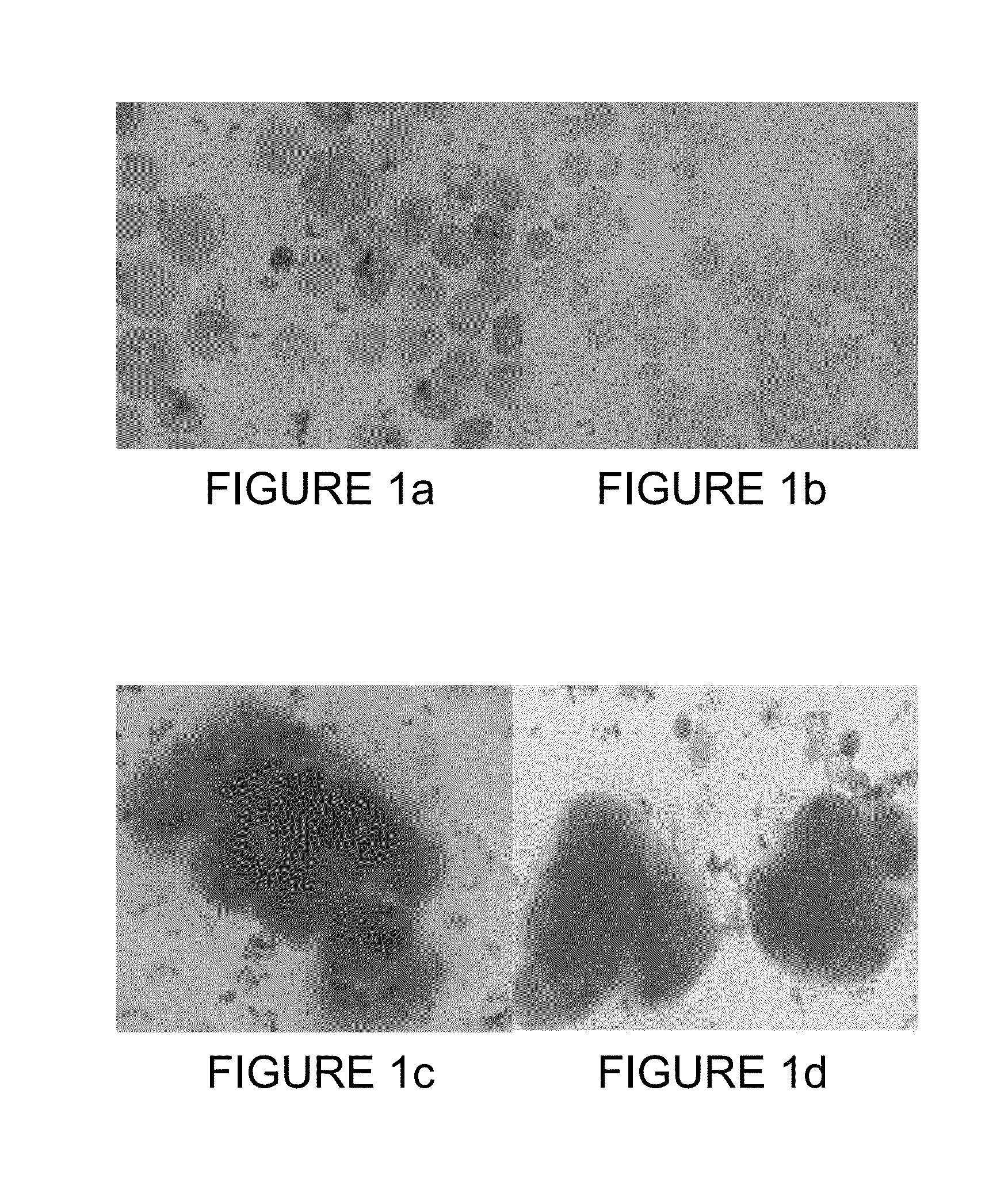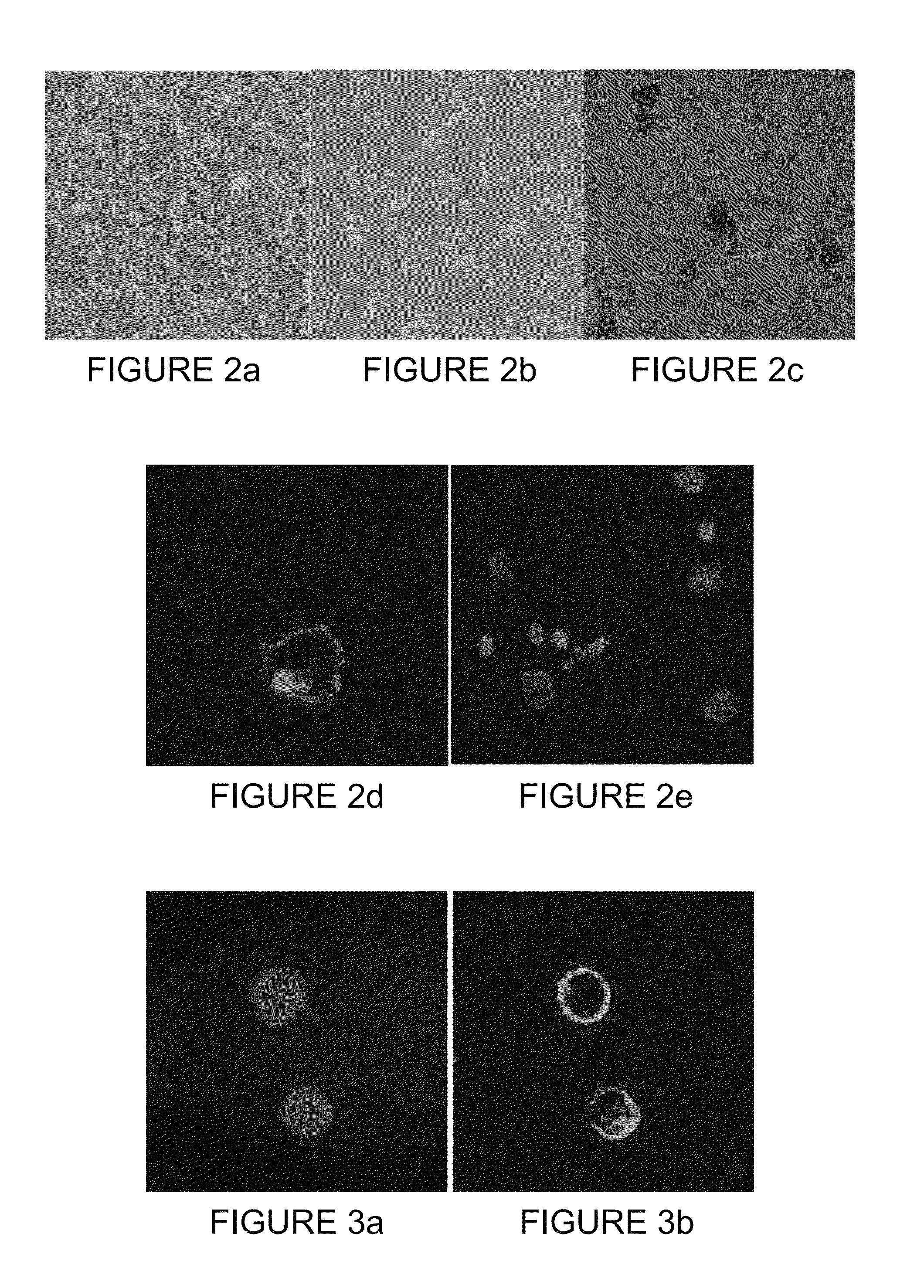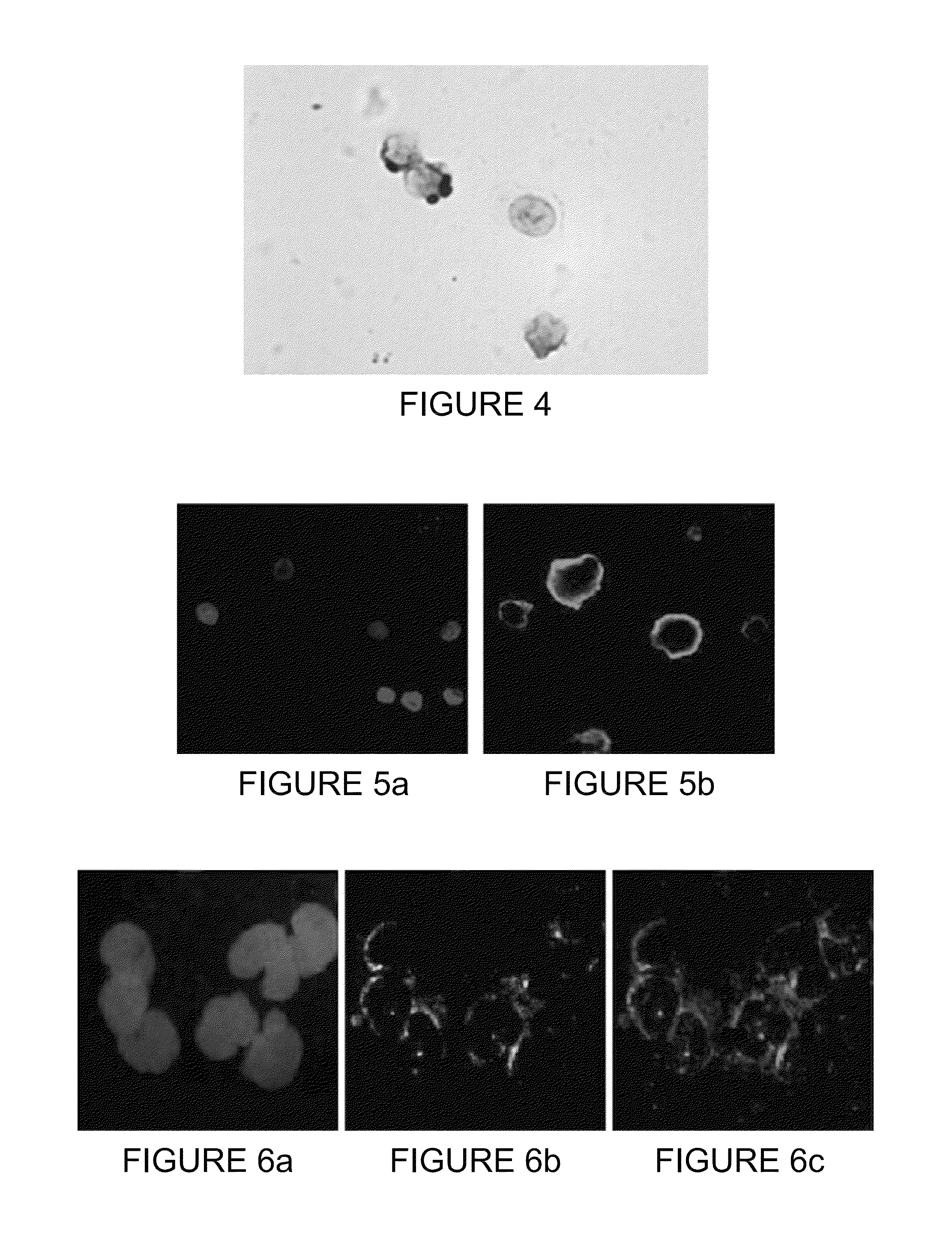Method of obtaining circulating cancer cell populations
a cancer cell and circulating technology, applied in the field of circulating cancer cell populations, can solve the problems of low detection sensitivity, difficult to characterize tumor/cancer cells using standard blood test procedures, and inability to fully isolate and molecularly characterize viable tumor cells, so as to prevent, treat and/or alleviate the symptoms of cancer, and lack of usefulness
- Summary
- Abstract
- Description
- Claims
- Application Information
AI Technical Summary
Benefits of technology
Problems solved by technology
Method used
Image
Examples
example i
CCC-Enrichment from Apheresis Product
[0121]Screening.
[0122]Cancer patients were first screened using 10 mL of peripheral blood followed by a Ficoll™ gradient (according to the manufacturer's instructions) to collect peripheral blood mononuclear cells (PBMCs). The PBMCs were then enriched in CCCs using a negative selection (RoboSep™) with magnetic beads coated with anti-CD45 specific antibodies (StemCell Technologies, Vancouver, BC). The CD45-negative fraction obtained is referred herein as the peripheral blood (PB)-enriched CCCs. Cells were examined by immunohistochemistry following a Cytospin™ concentration and staining with cytokeratin using the Epimet™ detection kit (AS Diagnostic, Germany). Patients classified as CTC-positive (based on Epimet™-positive staining) were selected for the apheresis procedure.
[0123]Semi-Purified CTCs from Apheresis Product.
[0124]Apheresis is conducted on screened patients as well as on normal subjects to obtain apheresis product (APP). The configurati...
example ii
Cellular Population Characterization
[0138]Late stage breast cancer patients that were enrolled screening positively for Epimet™. Twenty-seven (27) patients underwent apheresis. The cytokeratin-positive CTCs (as identified using Epimet™) from the APP from these patients ranged from 9 000 to 110 000 CTCs / APP.
[0139]Some of the PB-enriched CCCs as well as some of the ANCP-enriched CTCs stained positive for Epimet™ (FIG. 1). The ANCP-enriched CCCs can be cultured as monolayers (using the stem cell media). Alternatively, the APP-enriched CTCs can be cultured or in non-adherent conditions in MammoCult™ media (FIGS. 2A and 2B) and can form mammospheres (FIG. 2C).
[0140]Preliminary characterization in mammosphere culture indicates that these cells stain positively for ALDH1, negatively for cytokeratin (CK8) and harbor the CD44(+), CD24(−) phenotype characteristic of CSCs (data not shown). Six (6) passages in mammocultures on a selected number of patients were successfully achieved without evi...
example iii
[0152]One or more frozen aliquot of RoboSep™ CD45-negative cell population (described in Example I and containing about 5×106 nucleated cells and about 1 000 to 3 000 CTCs based on Epimet™-positive staining) is cultured in the conditions described in Example II until approximately 600 000 cells are obtained (usually after 6 subculture steps). This amount of cells is sufficient for testing four distinct compounds in triplicate at four different concentrations using a plating density of approximately 5 000 to 10 000 cells / well in 96-well plates. Cells are plated onto ultra-low attachment microtiter plates at 5 000 to 10 000 cells / well in 125 μL of fresh MammoCult™ media in triplicates. Experimental and control samples (no cells added) are incubated for 24 hours at 37° C. and 5% CO2. The MammoCult™ media is then replaced by 125 μL of the test compounds is diluted in MammoCult™ media at final concentrations of 0.01, 0.1, 10 and 100 μM. Incubation is prolonged for a...
PUM
| Property | Measurement | Unit |
|---|---|---|
| diameter | aaaaa | aaaaa |
| Volume | aaaaa | aaaaa |
| volume | aaaaa | aaaaa |
Abstract
Description
Claims
Application Information
 Login to View More
Login to View More - R&D
- Intellectual Property
- Life Sciences
- Materials
- Tech Scout
- Unparalleled Data Quality
- Higher Quality Content
- 60% Fewer Hallucinations
Browse by: Latest US Patents, China's latest patents, Technical Efficacy Thesaurus, Application Domain, Technology Topic, Popular Technical Reports.
© 2025 PatSnap. All rights reserved.Legal|Privacy policy|Modern Slavery Act Transparency Statement|Sitemap|About US| Contact US: help@patsnap.com



